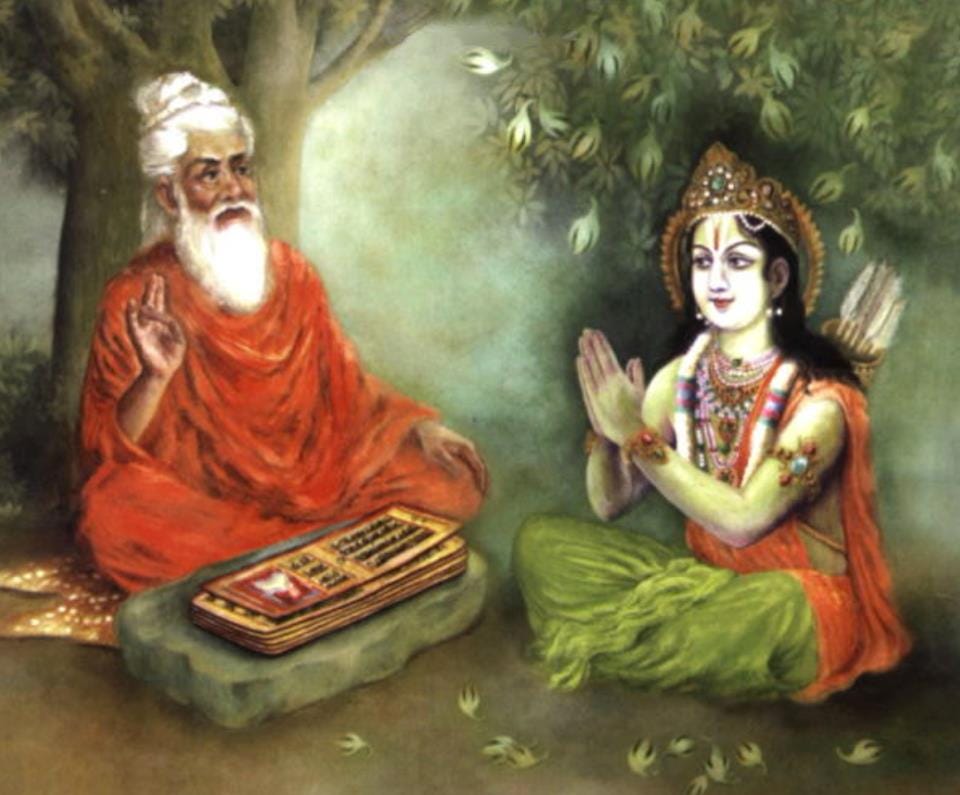9 Truths on Fate and Destiny that Lord Ram’s Guru Taught Him

When Lord Ram was 16, he went through the experience of seeing the pain that exists in the world and how everything is temporary. He had ventured out of the palace to see life as it was for everyone. He went into a bout of depression and contemplation. At that time Sage Vasistha approached King Dasratha and suggested that Ram needed to be taken through a spiritual process to “ground” him. Towards that Sage Vasistha then started a dialog with Ram. What happened between them is recorded as the third longest book in history of mankind called the “Yoga Vasistha”.
Vasistha discussed the importance and the pre-eminence of Self-Effort in the spiritual journey. Here are 9 tremendously powerful quotes from “Vasistha’s Yoga” (English translation of the book by Swami Venkatesananda) that were transmitted by Sage Vasistha to Ram himself! We can benefit greatly from listening into the great Sage!!
Some interesting nuggets from Vasishtha’s Yoga:
1
… Wise man’s friend, O Rama, is his own action which arises spontaneously in him and in which there is no division or conflict. LIke a father, it encourages him and provides him with enthusiasm. LIke a wife, it checks him, restrains him and guides him. It does not abandon him even in the worst calamities. It is free from doubt. It promotes the spirit of renunciation. Because it turns anger and hate upon themselves, it is like quaffing nectar. It is his friend and helper even in the densest forest of troubles and difficulties. It is the treasure chest which contains the precious gems of faith.
The friend (one’s own action) has sons who are known as bathing (purity of body), charity, austerity and meditation. They, too, promote the welfare and happiness of all beings. Thespirit of happiness (or a happy spirit) is its wife who showers happiness on all naturally and effortlessly. Her name is Samata (Equanimity or even-ness of mind). She encourages her husband (natural action) in the performance of righteous or appropriate action.
9 Truths on Self Effort Lord Ram's Guru Taught Him #Hinduism Click To Tweet
2
IN this world whatever is gained.. is gained only by self effort; where failure is encountered its is seen there has been slackness in the effort. This is obvious; but what is called fate is fictitious and not seen.
3
Self – effort is of two categories: that of the past births and that of this birth. The latter effectively counteracts the former. Fate is none other than self-effort of a past incarnation. There is constant conflict between these two in this incarnation; and that which is more powerful triumphs.
4
There is no power greater than right action in the present. Hence, one should take recourse to self -effort, grinding one’s teeth, and one should overcome evil by good and fate by present effort.
5
A lazy man is worse than a donkey. One should never yield to laziness but strive to attain liberation, seeing that life is ebbing away every moment.
6
One who says “Fate is directing me to do this” is brainless, and the goddess of fortune abandones him. Hence, by self effort acquire wisdom and then realize that this self effort is not without its own end, in the direct realization of the truth.
7
If this dreadful source of evil named laziness is not found on earth, who will ever be illerate and poor? It is because laziness is found on earth that people will live the life of animals, miserable and poverty stricken.
8
Fate or divine dispensation is merely a convention which has come to be regarded as truth by being repeatedly declared to be true. If this god or fate is truly the ordainer of everything in this world, of what meaning is any action (even like bathing, speaking, or giving), and whom should one teach at all? No. In this world, except a corpse, everything is active and such activity yields its appropriate result. No one has ever realized the existence of fate or divine dispensation.
9
The fruition of self effort by which one experiences the good and evil results of past action is called fate or daivam by people.
This post was first published on Oct 31, 2005





